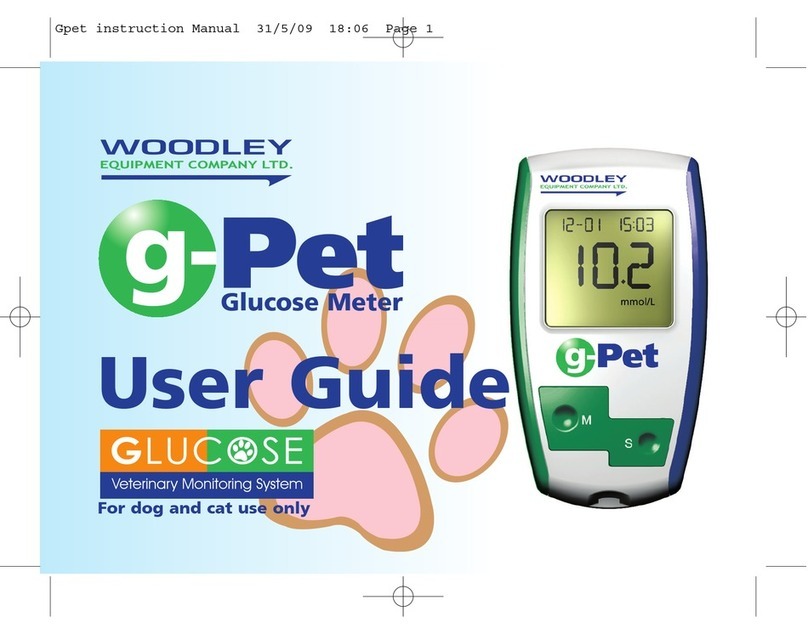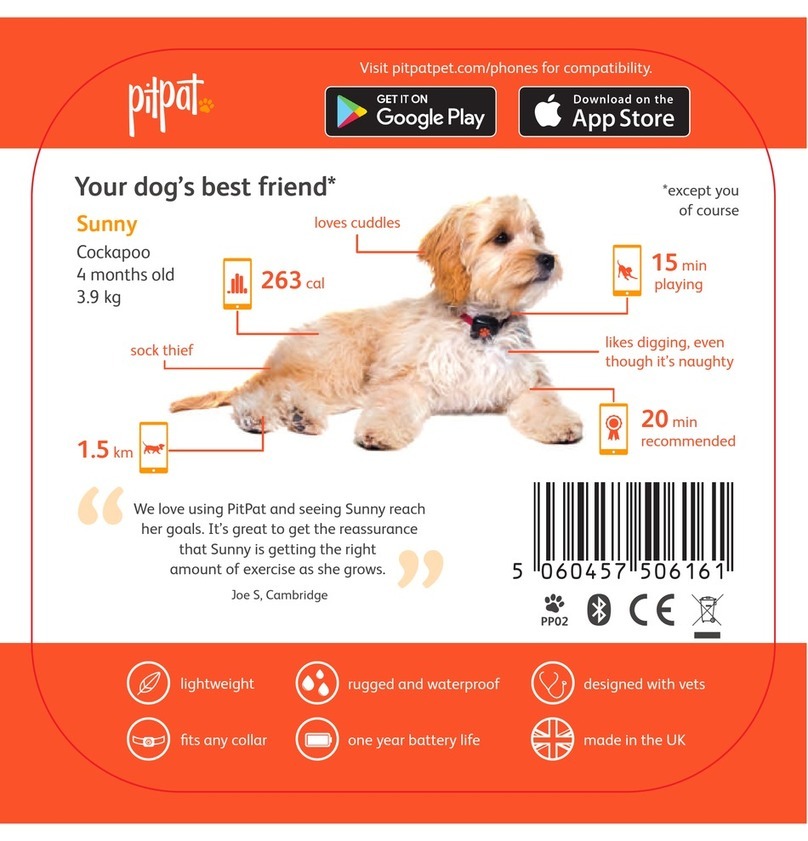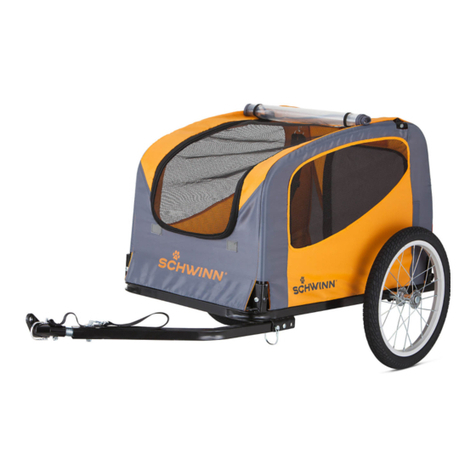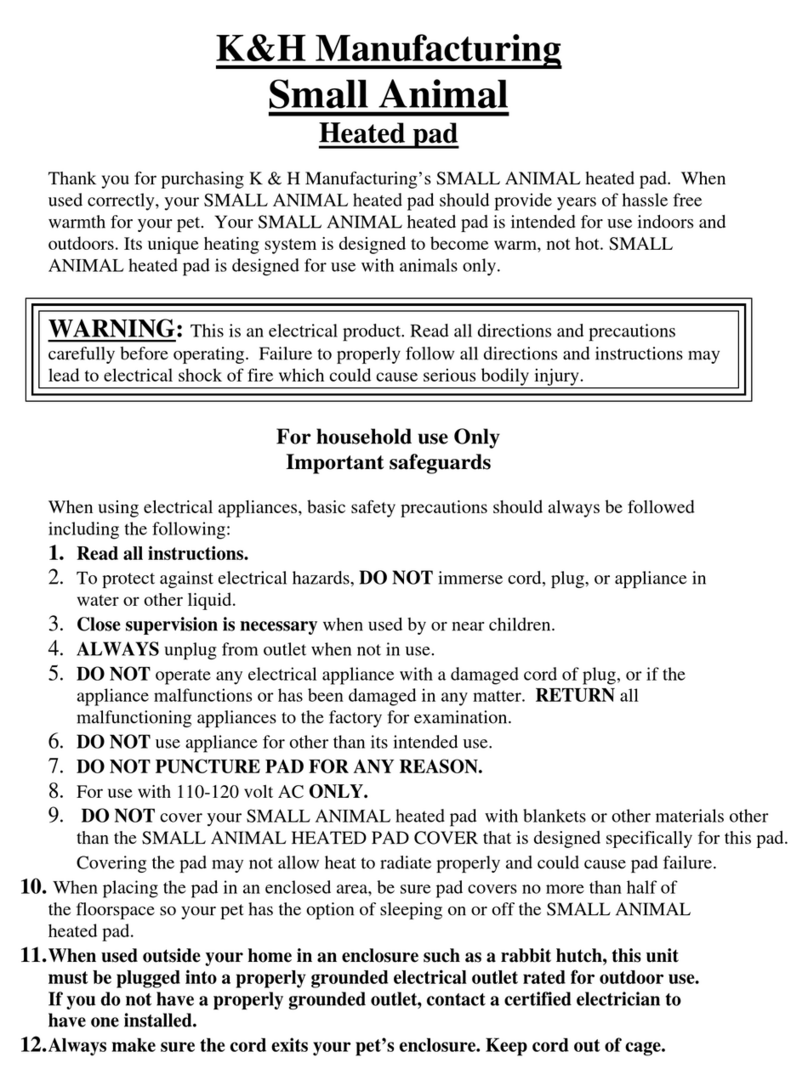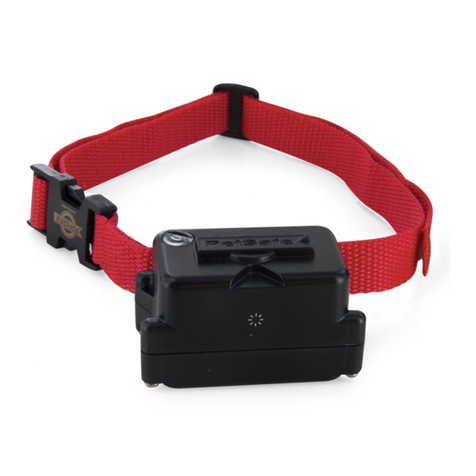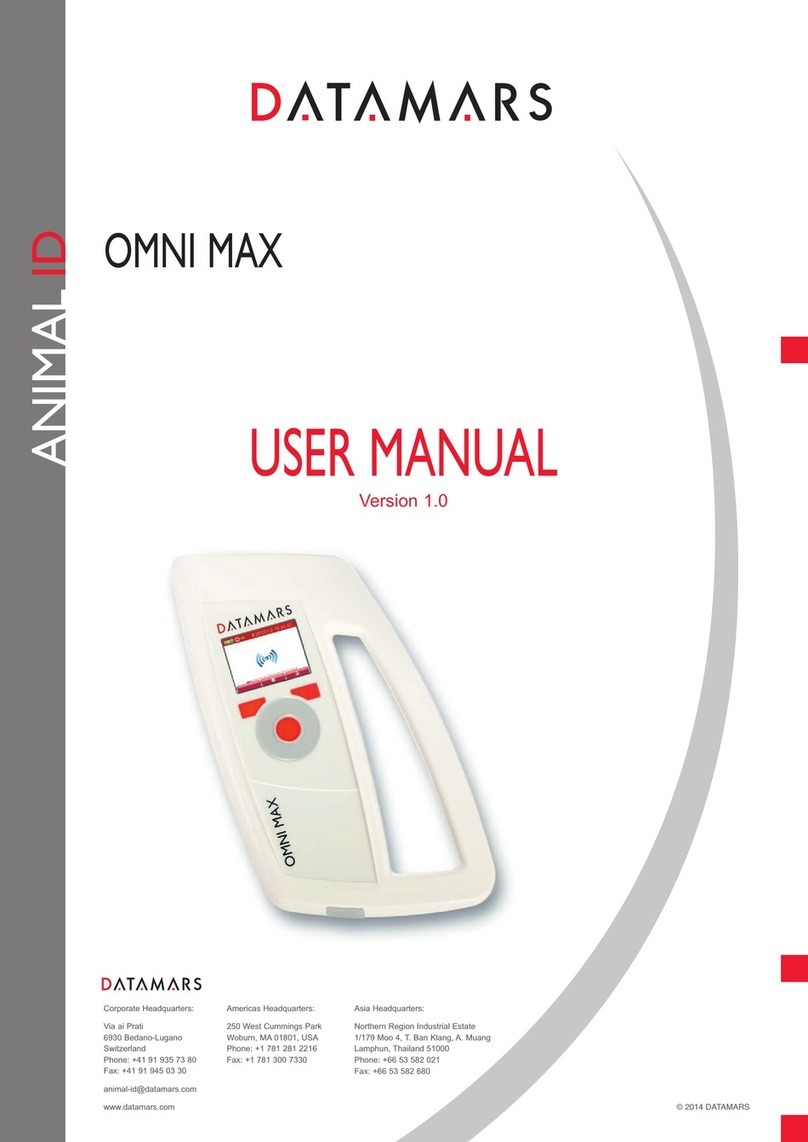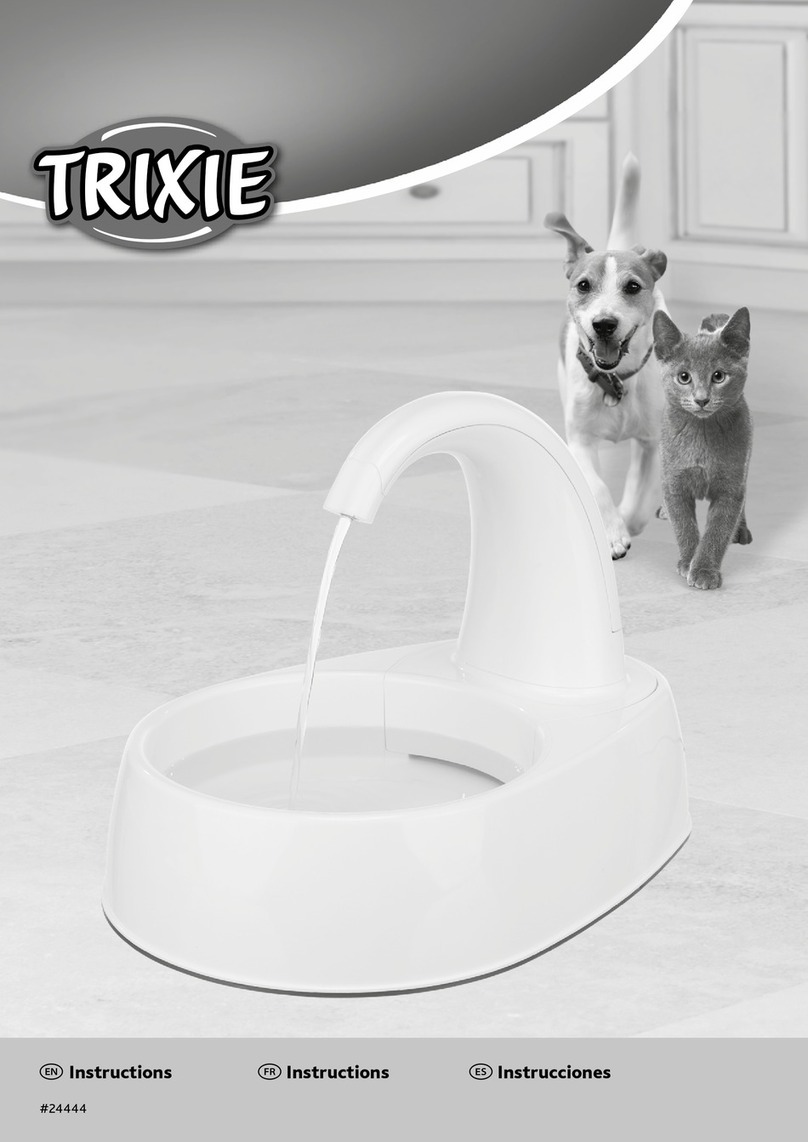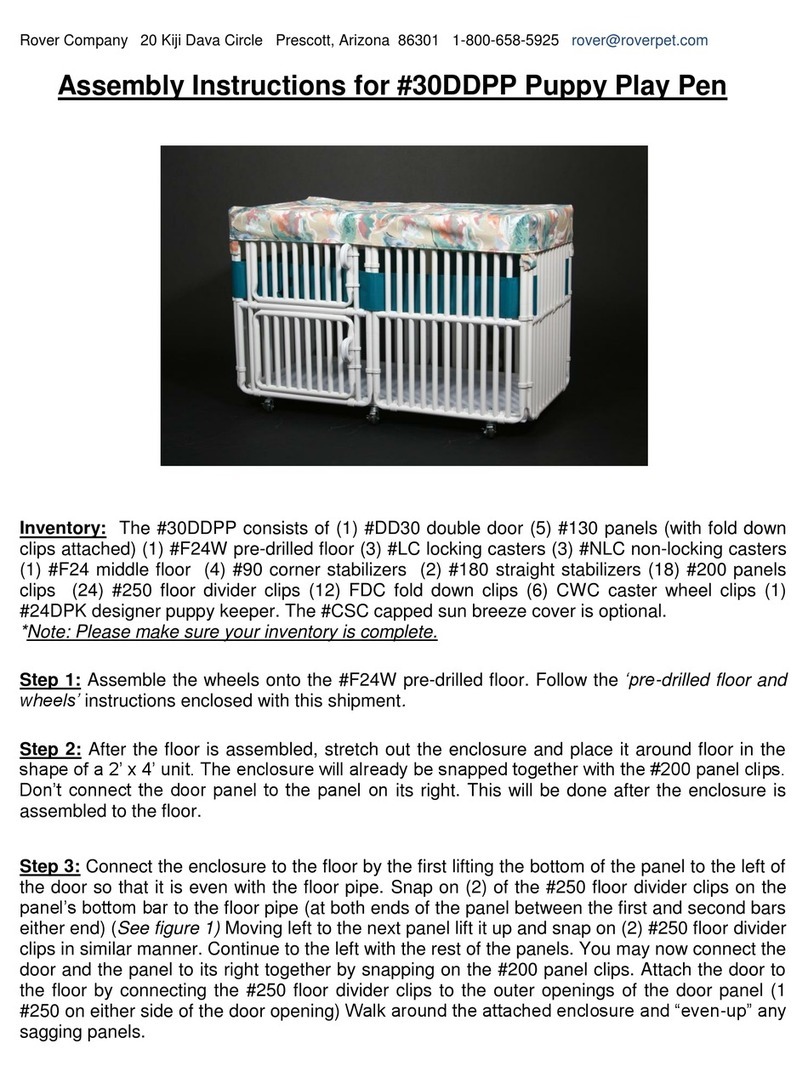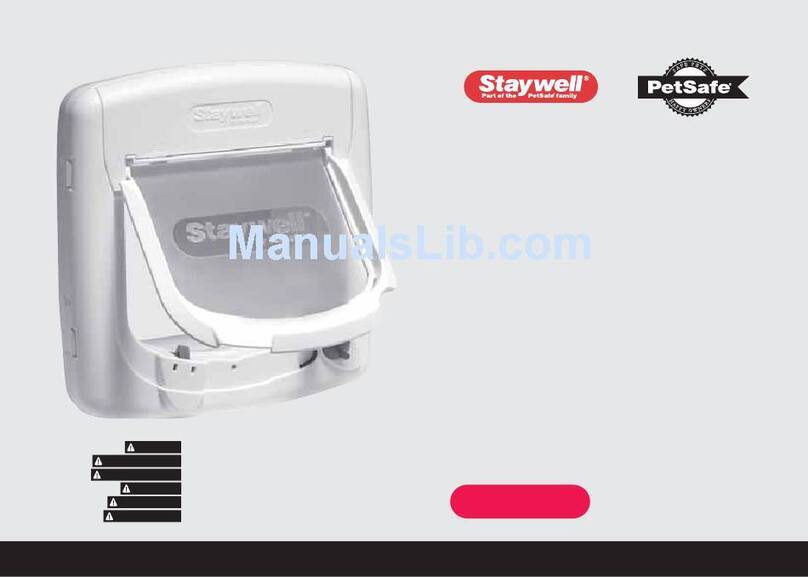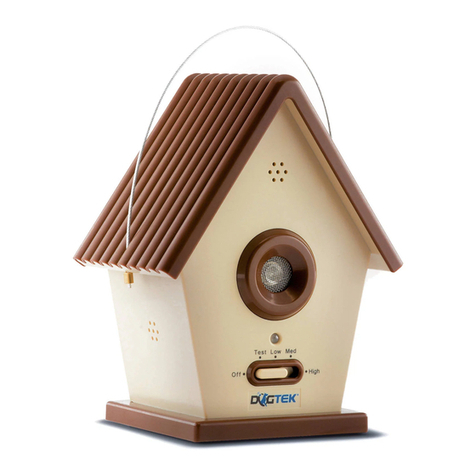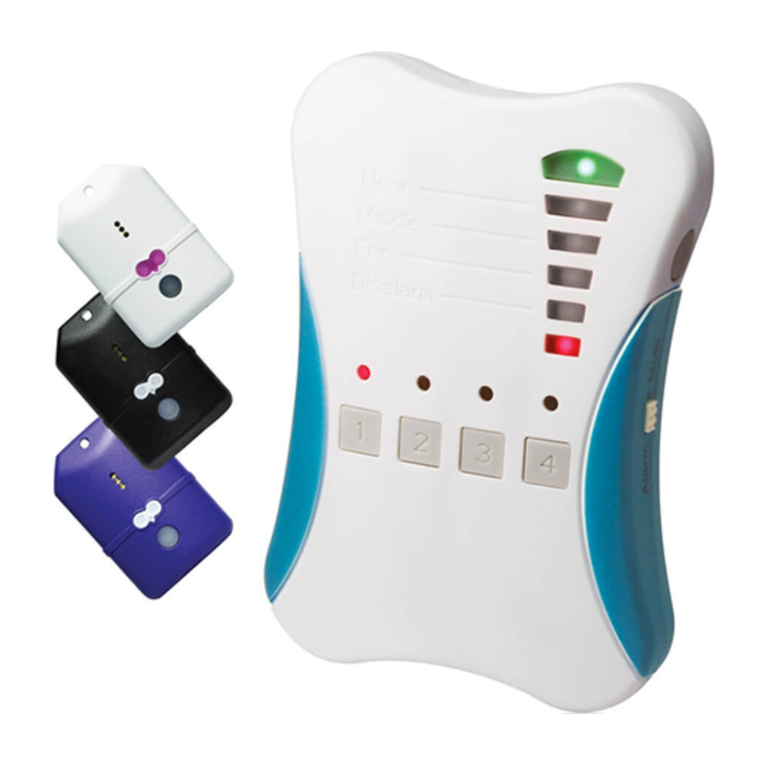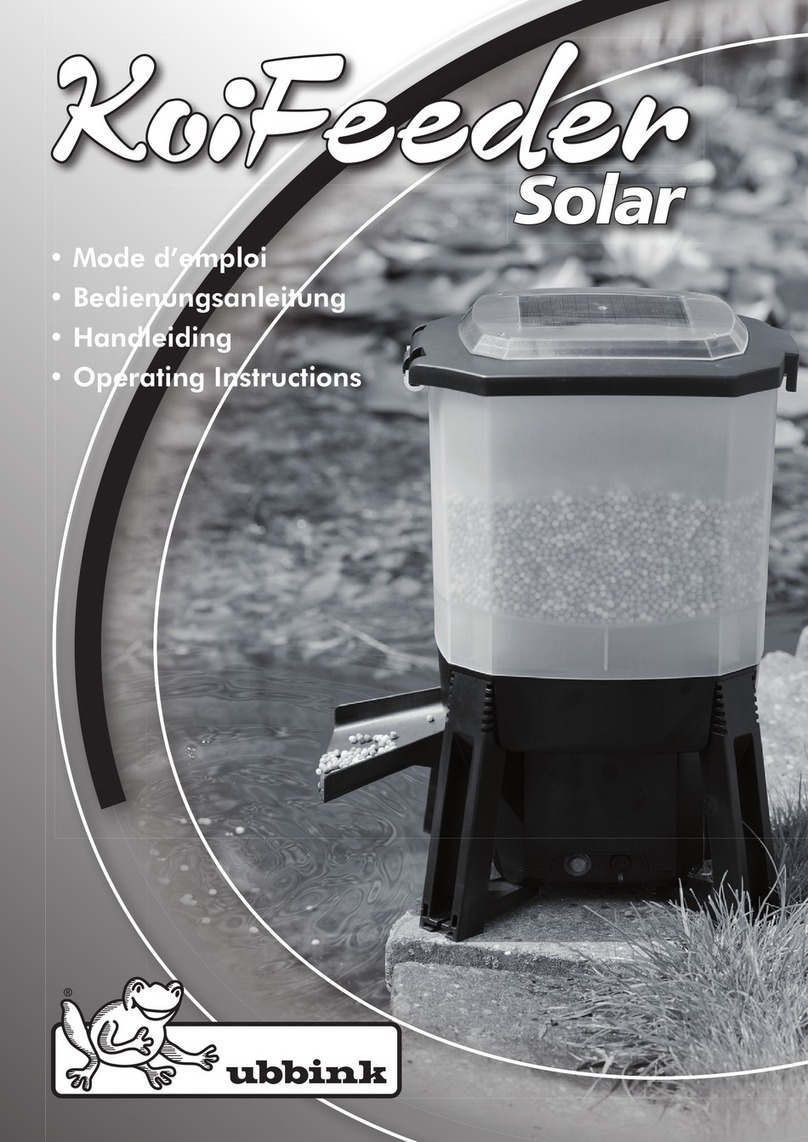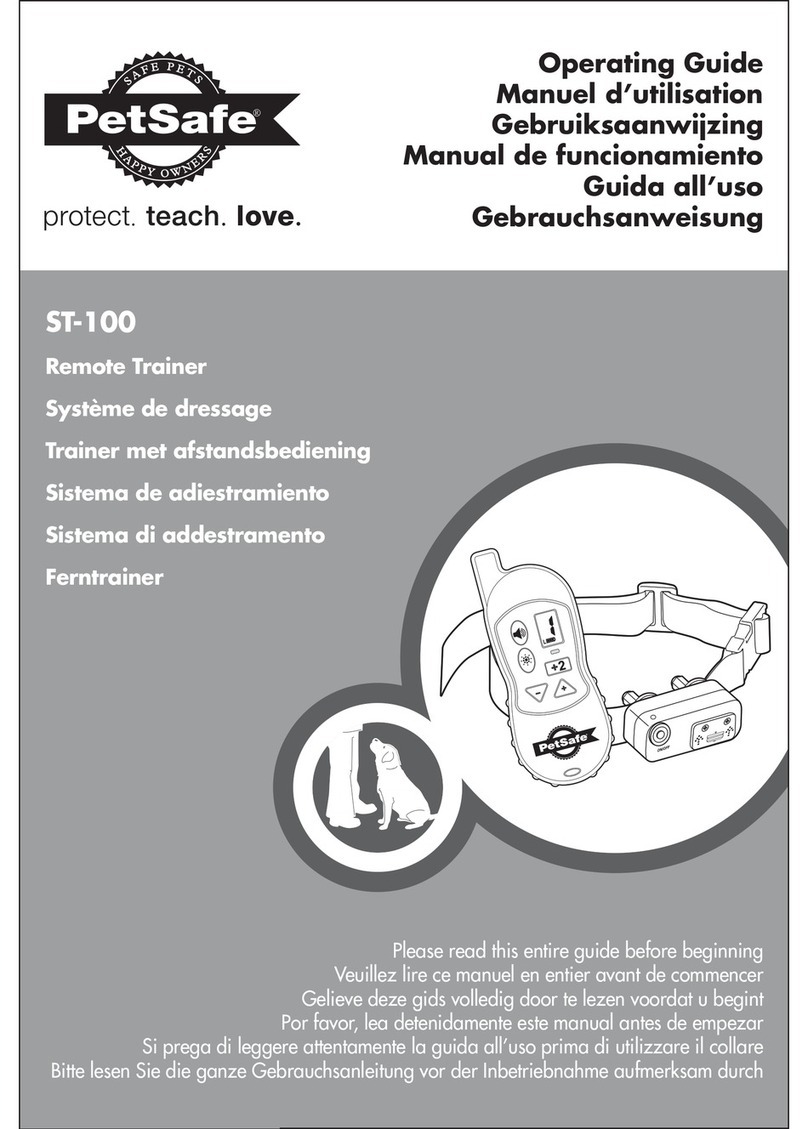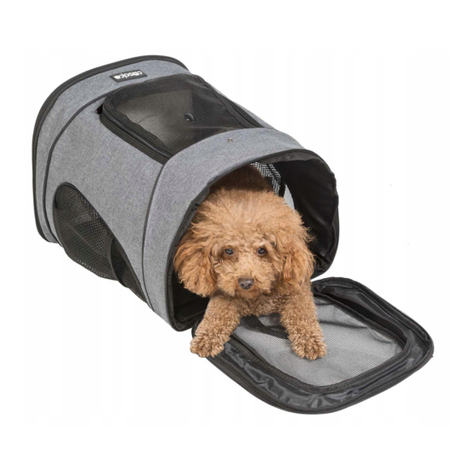Woodley L-Pet User manual


1
Veterinary Lactate Meter
Table of Contents
Introduction...................................................................................................3
Contents of the System ................................................................................4
Meter Components ......................................................................................6
L-Pet Blood Lactate Test Strip......................................................................7
Using the Meter for the First Time ................................................................9
• Setting the Clock..............................................................................9
• Turning ON/OFF Beep Sound .......................................................10
• Changing Unit of Measurement ..................................................... 11
• Coding the Meter ...........................................................................13
• Checking the System.....................................................................16
• Control Solution Method ................................................................18
Performing a Blood Lactate Test ................................................................ 22
• Obtaining a Drop of Blood .............................................................22
• How to Perform a Test ...................................................................23
• Understanding the Test Result....................................................... 26

Veterinary Lactate Meter
2
Using the Meter Memory ............................................................................27
Setting Time After First Use........................................................................28
Meter Maintenance.....................................................................................30
Troubleshooting..........................................................................................33
Product Warranty........................................................................................36
Specications .............................................................................................37
Symbols Used in this Manual ....................................................................39

3
Veterinary Lactate Meter
Introduction
All the information that will be needed to use and maintain the L-Pet Veterinary
Lactate Meter is included in this manual. Please read it carefully before using the
system.
The L-Pet Veterinary Lactate Meter provides important information concerning
individual metabolism and oxygen debt.
Lactate results can be used to detect local or systemic hypoperfusion and
monitor response to therapy. There is also a strong correlation between lactate
concentration and mortality. Due to its reliable and accurate result evaluation
(in-vitro), the L-Pet Veterinary Lactate Meter is suitable for use in the support of
the decision for further medical treatment of the patient. The L-Pet Veterinary
Lactate Meter is designed for veterinary use only.

Veterinary Lactate Meter
4
Contents of the System
The L-Pet system includes the following items:
• L-Pet Veterinary Lactate Meter • Lancing Device
• L-Pet Blood Lactate Test Strips (5) • Lancets (28G)
• Monitor Checker • Wallet
• 3V Lithium Coin Cell Battery (CR2032) • Code Card
• User Guide • Log Book
In addition to the items above, the L-Pet Lactate Control Solution may also need
to be purchased to check the system. Please contact your nearest authorised
dealer when needed.

5
Veterinary Lactate Meter
Code Card
Monitor
Checker
Code Card Port
Display
Battery
Compartment
Enter Button
Shift Button
Test Strip Holder
FRONT BACK
Veterinary Lactate
Meter
Woodley Equipment Company Ltd.
St. John Street
Horwich
Bolton
BL6 7NY, UK
Tel: +44 (0) 1204 669033
FOR VETERINARY USE ONLY
NY000001 P/N 59106000857 Rev. 3/19
S54147

Veterinary Lactate Meter
6
Meter Components
LCD Screen ................ Displays information that guides users through testing
and setup, and shows test result and error messages
Shift & Enter Button ..... Turn the Meter on and off. Control selection and steps
of user-programmable setup in Function Mode.
Test Strip Holder ......... Insertion site for test strip. Located on the lower front
side of the meter.
Battery Compartment.... Holds one 3V Lithium Coin Cell Battery to power the
system. Located on the back of the meter.
Monitor Checker .......... Used to confirm that the meter is functioning properly.
Code Card Port ............ Insertion site for a Code Card, located on the upper rear
of the meter.
Code Card.................. Codes the meter for the test strips that have the same
code when inserted into the code card port. Insert the
code card with the code number facing up. One code
card is packaged with each box of test strips.

7
Veterinary Lactate Meter
L-Pet Blood Lactate Test Strip
Contact Points ............ Sense the position and orientation of the test strip
Test Strip Handle......... The area to be held when inserting the test strip.
Reaction Zone............. The area where the blood sample or control solution is
applied.
IMPORTANT:
L-Pet Blood Lactate Test Strips are contained in a moisture proof and light
protected bottle. The test strips are sensitive to moisture and light so it is
important that the bottle is kept well sealed before use. Replace the cap of the
Contact Points Test Strip Handle
Reaction Zone (Apply Blood Here)

Veterinary Lactate Meter
8
test strip bottle tightly after a test strip is removed from the bottle. DO NOT
leave test strips outside the bottle when not in use. When performing a blood
test, insert the test strip with contact points facing up and towards the meter,
then apply the blood sample. For additional information on the L-Pet Blood
Lactate Test Strips, refer to the package insert.

9
Veterinary Lactate Meter
Using the Meter for the First Time
Setting the Clock
Step 1: Press any key to turn the meter on.
Step 2: The pre-set Year will flash on the screen. Press “SHIFT” to scroll through
the years and press “ENTER” to confirm. Press and hold “SHIFT” for
quick searching of the years. The meter provides calendar years from
2005 to 2099.
Step 3: The pre-set Month will flash on the screen. Press “SHIFT” to scroll
through the months and press “ENTER” to confirm. Press and hold
“SHIFT” for quick searching of the month.
Step 4: The pre-set Day will flash on the screen. Press “SHIFT” to scroll through
the days and press “ENTER” to confirm. Press and hold “SHIFT” for
quick searching of the day.
Table of contents
Other Woodley Pet Care Product manuals

